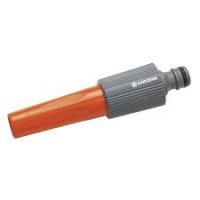Hi,
I did a clean out of the waste tank of my 2007 Cali a year or two ago to remove any build-up.
Waste pipes are routinely cleaned by "jetting", and while the Cali outflow pipes are probably too small for this, the tank can be jetted through the access hatch, using a small power washer with a 90-degree head, or a jetting accessory. A bit of care avoids flooding the kitchen unit, etc. An old towel will mop up any splashes.
You can compare the "before" and "after" condition by taking flash photos with your phone through the hatch.
If there are a lot of food bits, etc. present, it might be advisable to remove the waste water through the hatch, possibly by using a suction of some kind, or a syphon hose out the sliding door.
Prevent Sludge Build-up:
I find that if I use the plastic basin insert to wash up, and then pour the washing water through a small wire strainer, it collects a lot of bits like muesli grains, crumbs, etc which would otherwise build up in the tank.
It's also a good idea to keep the plug in place to avoid "nasty smells" which happens occasionally when the "u-bend" water evaporates!
The tank hasn't ever blocked up, its possibly worth looking at what drains out of it now and again, to see if any potential problems are present.
If you can't open the hatch due to a full tank, this might be overcome by unscrewing the water level sensor, (big white nut with two wires) which inserts through a threaded hole about 30-40mm in diameter, big enough to get a hose through and to the bottom of the tank.

















